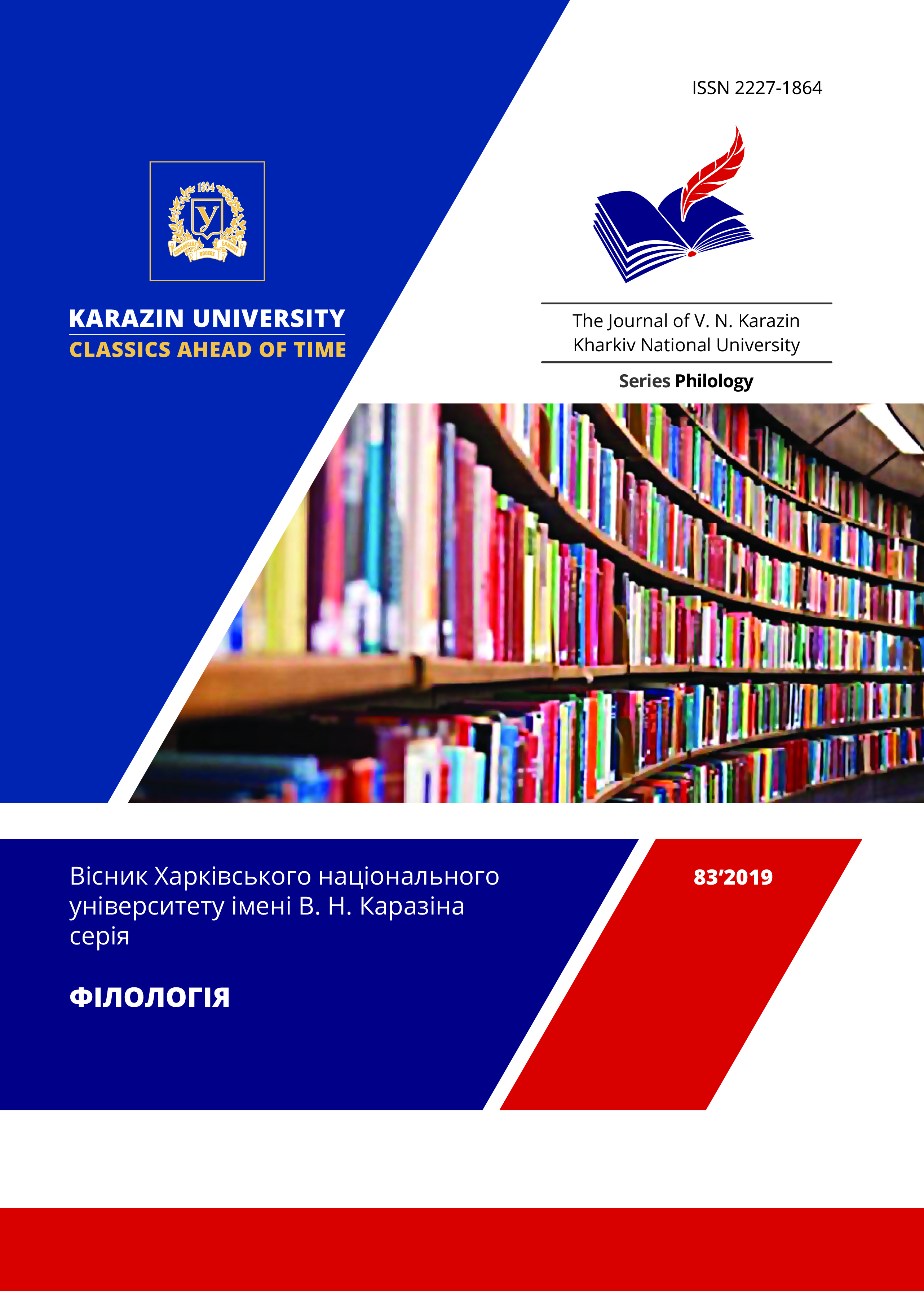Literary cinematography in the work of S. Kolbasyev (on the example of the story «“Canning” Factory»)
Abstract
The article presents an analysis of the techniques of cinematic poetics in S. Kolbasyev’s short story «“Canning” Factory». In the corpus of post-symbolic texts, the work of this author remains a promising material for study, since at the moment we have not been able to find large-scale philological studies devoted to his legacy.
Kolbasyev’s biography contains many gaps and dark places. Nevertheless, encyclopedic notes indicate that he was a friend of N. Gumilyov and, together with K. Vaginov and N. Tikhonov, was a member of the literary group “Islanders”.
For analysis, we took the story «“Canning” Factory» (another name — “Ham and Peas”), written obviously between 1923 and 1928. Post-symbolic texts generally gravitate toward the use of cinema techniques. The historical reality of this time itself is to some extent cinematic: causal relationships are broken, logic is lost, the former whole world breaks up into fragments, “montage” connected to each other. The film language, thus, could not be better suited to the needs of the fragmented, mosaic era. We could not find evidence of Kolbasyev’s attitude to cinematic art, but cinematic principles were used in his work by his companion in the “Islanders” K. Vaginov.
The first part of the story is filled with signs of “literary cinema“. At the same time, to call this text a model of cinematic prose would be an exaggeration. However, one cannot fail to notice that along with M. Bulgakov, V. Kaverin, L. Lunts, V. Kataev, A. Green S. Kolbasyev gravitates to the aesthetics of expressionism, which is expressed by the presence of elements of “expressive cinema” in the post-symbolic texts of these authors.
Downloads
References
Byichkov V. V. Estetika: uchebnik. Moskva: KNORUS, 2012. 528 s.
Golubkov M. M. Russkaya literatura XX veka. Posle raskola. Moskva: Aspekt Press, 2001. 267 s.
Kapinos E. V., Kulikova E. Yu. «Otkryitoe more» S. A. Kolbaseva: literaturnyiy kontekst i poetika // Kritika i semiotika. 2018. # 2. S. 101–126.
Kirichenko S. Eticheskie printsipyi hudozhnika-tvortsa v rasskazah S. A. Kolbaseva (S. Kolbasev i N. GumilYov) // Mova I kultura. 2013. Vip. 16, t. 6. S. 305–311.
Kolbasev S. A. „Konservnyiy” zavod. URL: http://az.lib.ru/k/kolbasxew_s_a/text_1928_konservnyj_zavod.shtml (data obrascheniya: 05.10.2019)
Kolbaseva G. S. Byil li rasstrelyan pisatel Sergey Kolbasev? URL: http://visz.nlr.ru/person/show/5851 (data obrascheniya: 05.10.2019)
Kreymer A. Odisseya kapitana Kolbaseva. URL: https://www.odessitclub.org/publications/almanac/alm_46/alm_46_206-211.pdf (data obrascheniya: 05.10.2019)
Martyanova I. A. Kinovek russkogo teksta: paradoks literaturnoy kinematografichnosti. Sankt-Peterburg: SAGA, 2002. 240 s.
Russkaya literatura XX veka. Prozaiki, poetyi, dramaturgi: biobibl. slovar: v 3 t.; pod red. N. N. Skatova. Moskva: OLM A-PRESS Invest, 2005. T. 2. Z – O. S. 231–232.
Terehina V. N. Ekspressionizm v Rossii: faktyi i suzhdeniya // Vestnik literaturnogo instituta imeni A. M. Gorkogo. 2016. # 1. S. 6–17.
Skorospelova E. B. Russkaya proza HH veka: ot A. Belogo («Peterburg») do B. Pasternaka («Doktor Zhivago»). Moskva: TEIS, 2003. 358 s.
Shlapakov P. V. Teatralizatsiya literaturyi v romane K. Vaginova «Bombochada» // Izvestiya Samarskogo nauchnogo tsentra Rossiyskoy akademii nauk. 2010. T. 12. # 5(3). S. 818–821.




